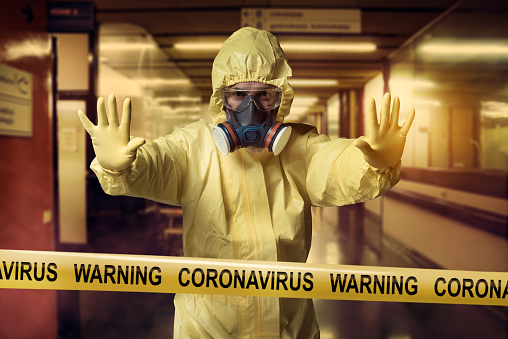
Robot Delivery Service
May 27, 2020
The difference between UV-Lights
June 13, 2020Covid-19 has hit the world economy hard and affected almost all industries. In order to reduce the risk of exposure to the new coronavirus. Consequently, all governments’ plan is to focus on cleaning and disinfecting public spaces, workplaces, businesses, schools, and can also be applied to your home.
When we mention Disinfection, We need to stress the fact that there are a lot of methods to use for this process. Indeed, currently there are two disinfection methods that are widely available which are Ultraviolet light( UV-C) and Fogging with hydrogen peroxide vapor or mist ( Dry Fogging).
UV radiation (UV-C) kills bacteria and viruses by damaging the DNA/RNA of the cells of microorganisms. A 2018 Colombia University study demonstrated just how effective UV light can be against viruses, as it destroyed over 95% of all pathogens. UV light can do this in a room in 20 minutes.
UVC wavelengths are between 200 and 300 nanometers, making them germicidal; meaning they are capable of inactivating microorganisms, such as bacteria, viruses and protozoa. This quality makes UVC energy an effective, environmentally-friendly and chemical-free way to prevent microorganisms from replicating in any environment.
On the other hand, Dry fogging is a relatively new decontamination technology that uses liquid disinfectant and compressed air as consumables. The ultrafine droplet size of the dry fog prevents it from easily falling onto surfaces, a desirable quality for space/area decontaminations.
Dry Fogging with Hydrogen Peroxide can be an essential intervention to rapidly reduce transmission of healthcare-associated pathogens. It can rapidly and safely deliver vapor to even the most complex areas.
Moreover, it achieves whole room surface disinfection. Because the quantity of dispensed disinfectant is controlled, in which there’s no need to reposition the fogger. The only room prep required is covering the HVAC vents.
To sum up, these two Disinfection methods are effective and work hand-in-hand for the decontamination procedure. Yet, the difference between them is that UVC technologies struggle with rooms that are not fully lit, meaning they are less likely to achieve a full whole-room disinfection. This is usually due to shadowing and other obstructions that create hiding spaces to shelter bacteria, which later spread.
Whereas, Dry Fogging or Hydrogen peroxide fogging, is not reliant on a central source of light, filling the room with a disinfecting fog and leaving no nooks, crannies or hiding spaces for bacteria.
Reference: Cleaning and Disinfecting, Reopening guidance for cleaning and Disinfecting, Evaluation of a Dry Fogging system, UV Disinfection vs Hydrogen peroxide,
[launchpad_feedback]




